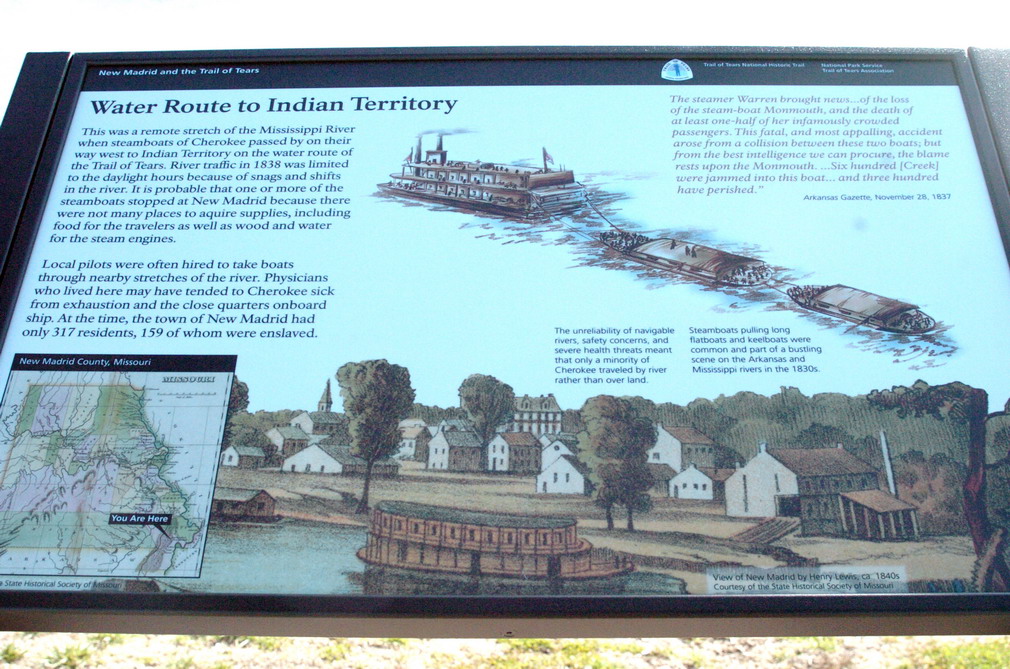Precipitated by the ratification of the Indian Removal Act of 1830, nearly 50,000 Native Americans – primarily from the Cherokee, Choctaw, Seminole, Creek and Chickasaw tribes – were forcibly removed from their homelands to an allocated territory in present-day Oklahoma. This forced movement later became known as the "Trail of Tears." The trek across several states claimed the lives of several thousand Native Americans. The tribes were gradually removed until 1838, when the Cherokees were the last tribe removed from their land.
Although the grueling trek is generally associated with being a death march across open plains, the Mississippi River played role in transporting the dispossessed tribes to their new territory. As part of its Trail of Tears National Historic Trail, the National Park Service (NPS) designed two signs, which were installed along the Mississippi in New Madrid, MO, to recount the perilous voyage aboard crowded vessels.
New Madrid was founded in 1808, and is noted as the oldest U.S. city west of the Mississippi. It was selected as the site for the waysides, as the NPS identifies these interpretive panels, because it was a likely Trail of Tears stop because there were few other settlements along this stretch of the Mississippi River in the early 19th century.
The tribes were transported upriver from New Madrid, which was situated in southeastern Missouri near Kentucky and Tennessee, before they disembarked and moved west across Missouri into Oklahoma. One of the panels unflinchingly describes the plight of the Monmouth, a steamboat traveling upriver while jammed with 600 Creeks onboard. It collided with another boat, and half of its passengers perished.
Carol S. Clark, an interpretive specialist for NPS’ National Trails Intermountain Region who designed the New Madrid exhibits, said the panels play an important role in recounting history because “they trigger an understanding that something important happened at that site, and make history accessible.”
NPS specified digitally printed, high-pressure laminate (DHPL) for the panel fabrication. She said they were good material for exterior installations because of the durability to the elements and resistance to vandalism.
Advertisement
iZone Imaging (Temple, TX) produced the DHPL panel by impregnating digitally printed paper with phenolic resin and a UV-resistant laminate, and the layers are joined through high pressure and heat.. Best Exhibits (Baraboo, WI) built the cantilevered bases from aluminum and protected them with black, powdercoated finish. New Madrid city employees bolted the signs into concrete footings.



 Tip Sheet4 days ago
Tip Sheet4 days ago
 Business Management2 weeks ago
Business Management2 weeks ago
 Women in Signs2 weeks ago
Women in Signs2 weeks ago
 Real Deal5 days ago
Real Deal5 days ago
 Benchmarks1 day ago
Benchmarks1 day ago
 Editor's Note1 week ago
Editor's Note1 week ago
 Line Time2 weeks ago
Line Time2 weeks ago
 Product Buying + Technology1 week ago
Product Buying + Technology1 week ago









